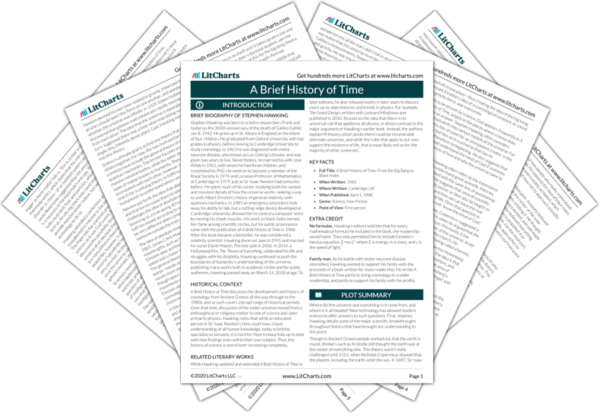Brief Biography of Stephen Hawking
Stephen Hawking was born to science researchers Frank and Isobel on the 300th anniversary of the death of Galileo Galilei, Jan 8, 1942. He grew up in St. Albans in England as the eldest of four children. He graduated from Oxford University with top grades in physics, before moving to Cambridge University to study cosmology. In 1963 he was diagnosed with motor neurone disease, also known as Lou Gehrig’s disease, and was given two years to live. Nevertheless, he married his wife Jane Wilde in 1965, with whom he had three children, and completed his PhD. He went on to become a member of the Royal Society in 1974 and Lucasian Professor of Mathematics at Cambridge in 1979, just as Sir Isaac Newton had centuries before. He spent much of his career studying both the vastest and minutest details of how the universe works, seeking a way to unify Albert Einstein’s theory of general relativity with quantum mechanics. In 1985 an emergency procedure took away his ability to talk, but a cutting-edge device developed at Cambridge University allowed him to control a computer voice by moving his cheek muscles. His work on black holes earned him fame among scientific circles, but his public prominence came with the publication of A Brief History of Time in 1988. After the book became a bestseller, he was considered a celebrity scientist. Hawking divorced Jane in 1995 and married his nurse Elaine Mason. The two split in 2006. In 2014, a Hollywood film, The Theory of Everything, celebrated his life and struggles with his disability. Hawking continued to push the boundaries of humanity’s understanding of the universe, publishing many works both in academic circles and for public audiences. Hawking passed away on March 14, 2018 at age 76.
Historical Context of A Brief History of Time
A Brief History of Time discusses the development and history of cosmology from Ancient Greece all the way through to the 1980s, and as such covers a broad range of historical periods. Over that time, discussion of the wider universe moved from a philosophical or religious matter to one of science and, later, primarily physics. Hawking notes that while an educated person in Sir Isaac Newton’s time could have a basic understanding of all human knowledge, today scientists specialize so minutely it is hard for them to keep fully up to date with new findings even within their own subject. Thus, the history of science is one of ever-increasing complexity.
Other Books Related to A Brief History of Time
While Hawking updated and extended A Brief History of Time in later editions, he also released works in later years to discuss more up-to-date theories and trends in physics. For example, The Grand Design, written with Leonard Mlodinow and published in 2010, focuses on the idea that there is no universal rule that applies to all physics, in direct contrast to the major argument of Hawking’s earlier book. Instead, the authors explain M-theory, which posits there could be innumerable alternate universes, and while the rules that apply to our own support the existence of life, that is most likely not so for the majority of other universes.
Key Facts about A Brief History of Time
-
Full Title: A Brief History of Time: From the Big Bang to Black Holes
-
When Written: 1983
-
Where Written: Cambridge, UK
-
When Published: April 1, 1988
-
Genre: Science, Non-Fiction
-
Point of View: First-person
Extra Credit for A Brief History of Time
